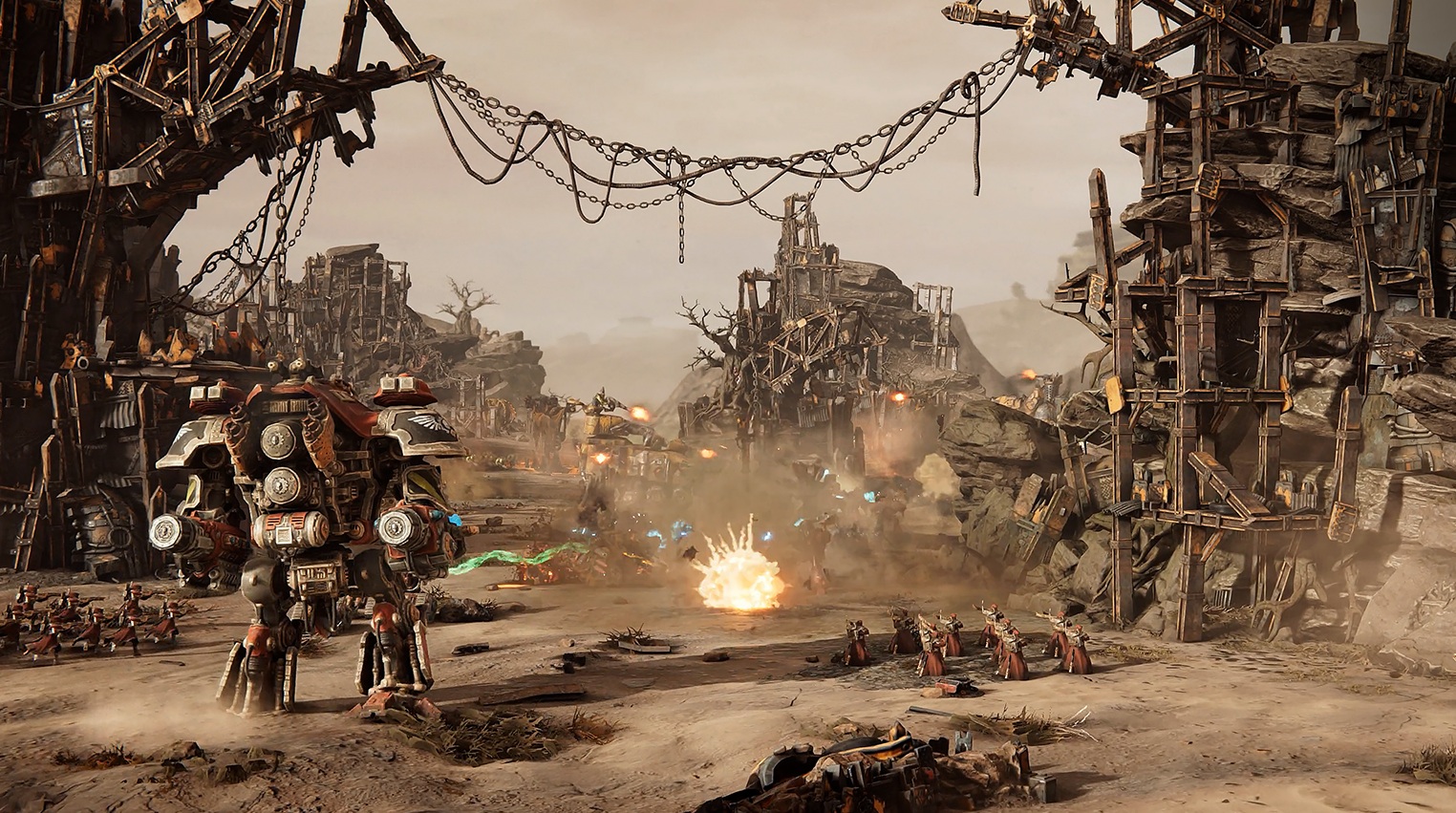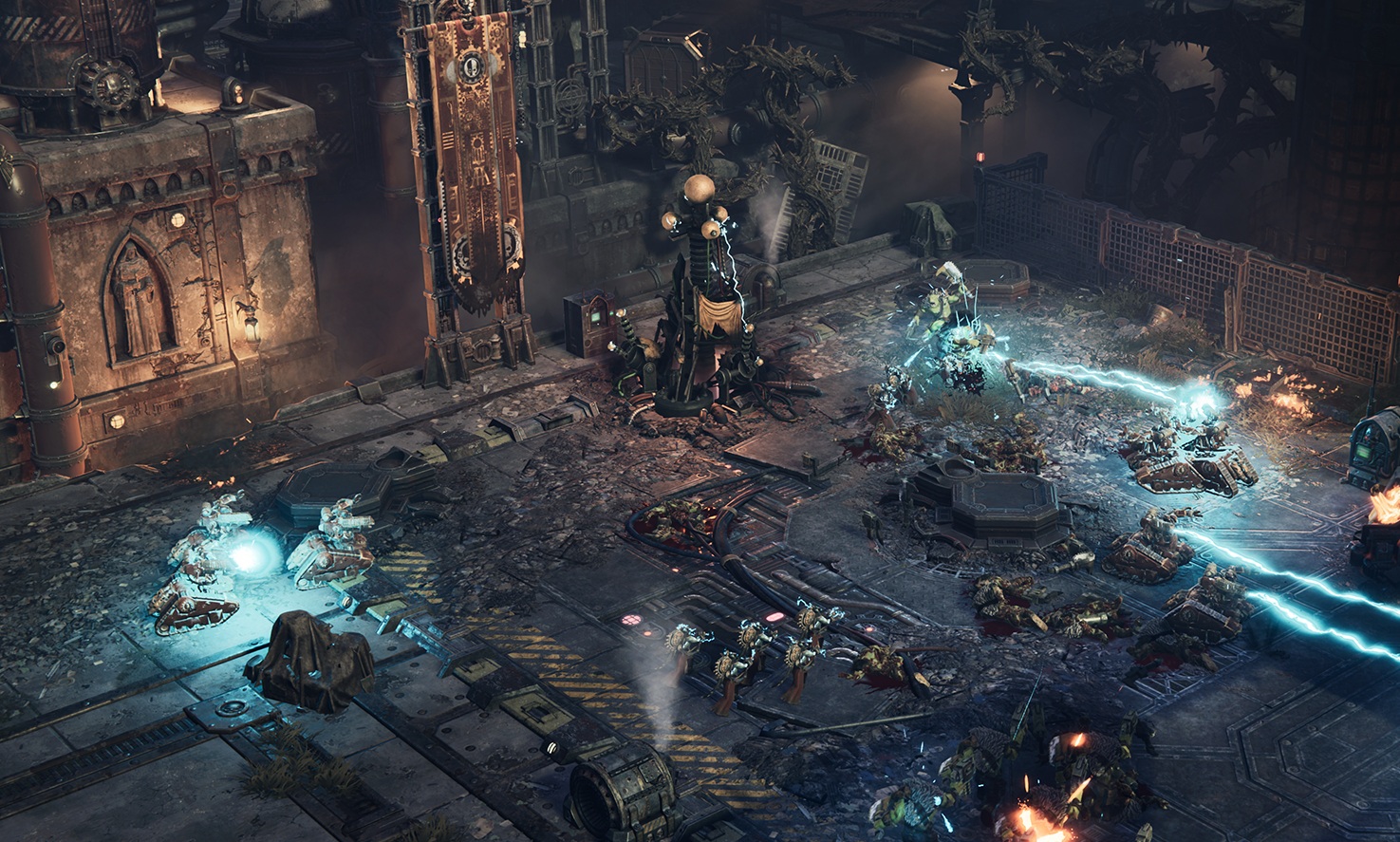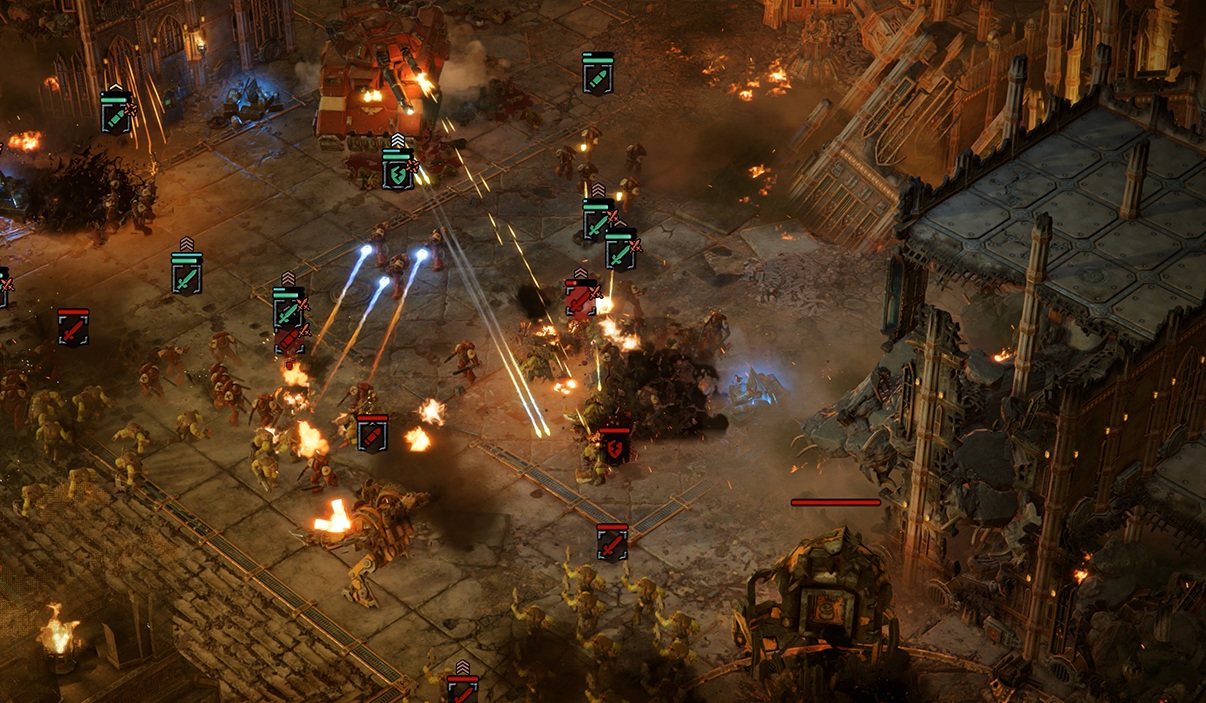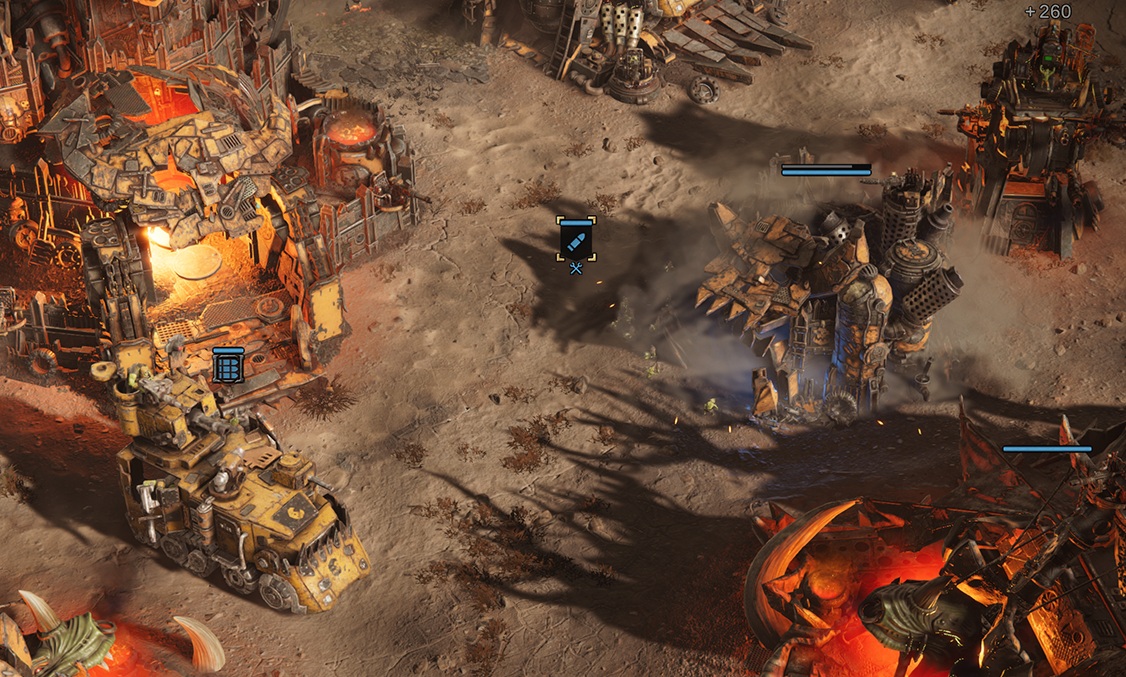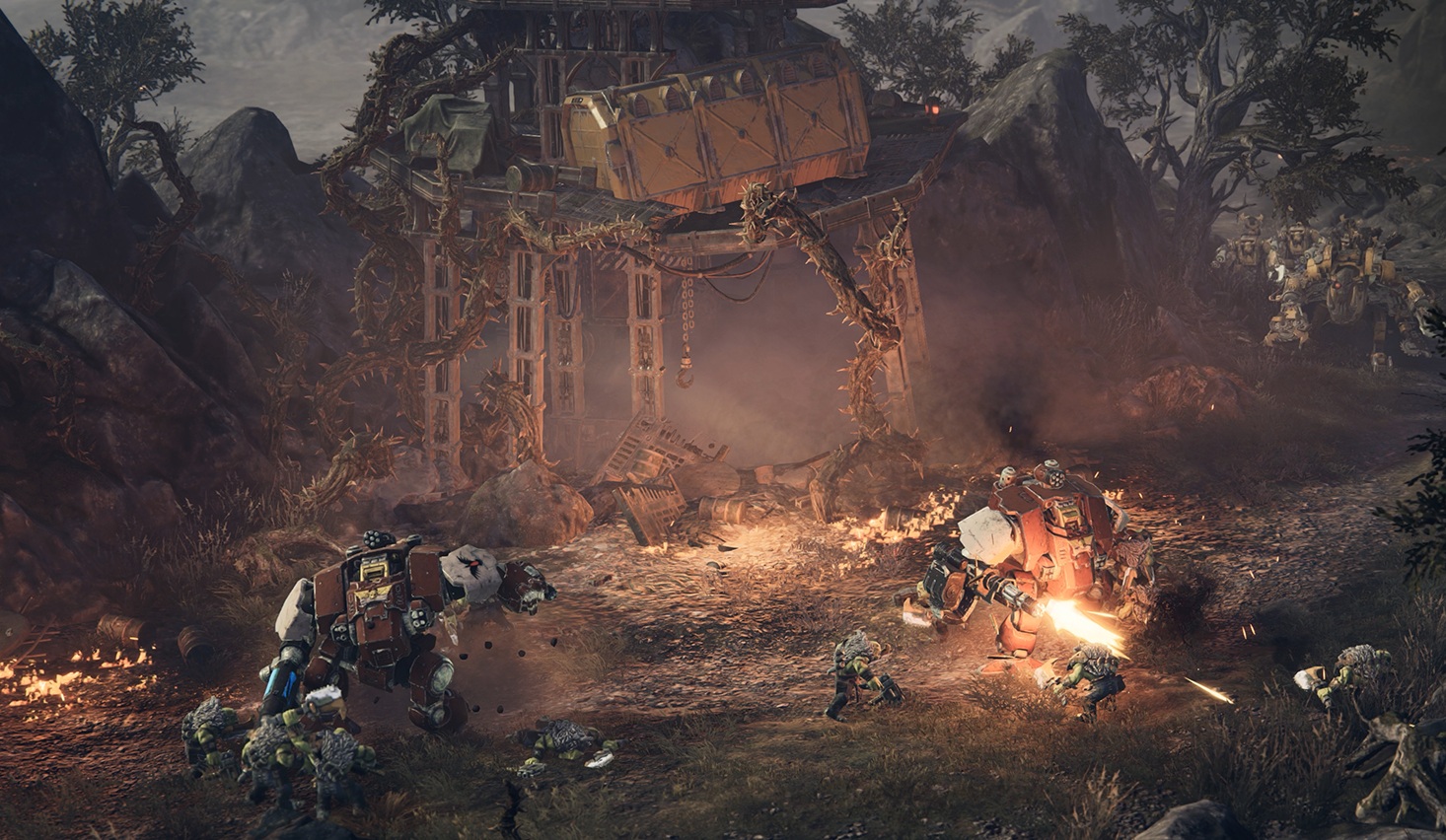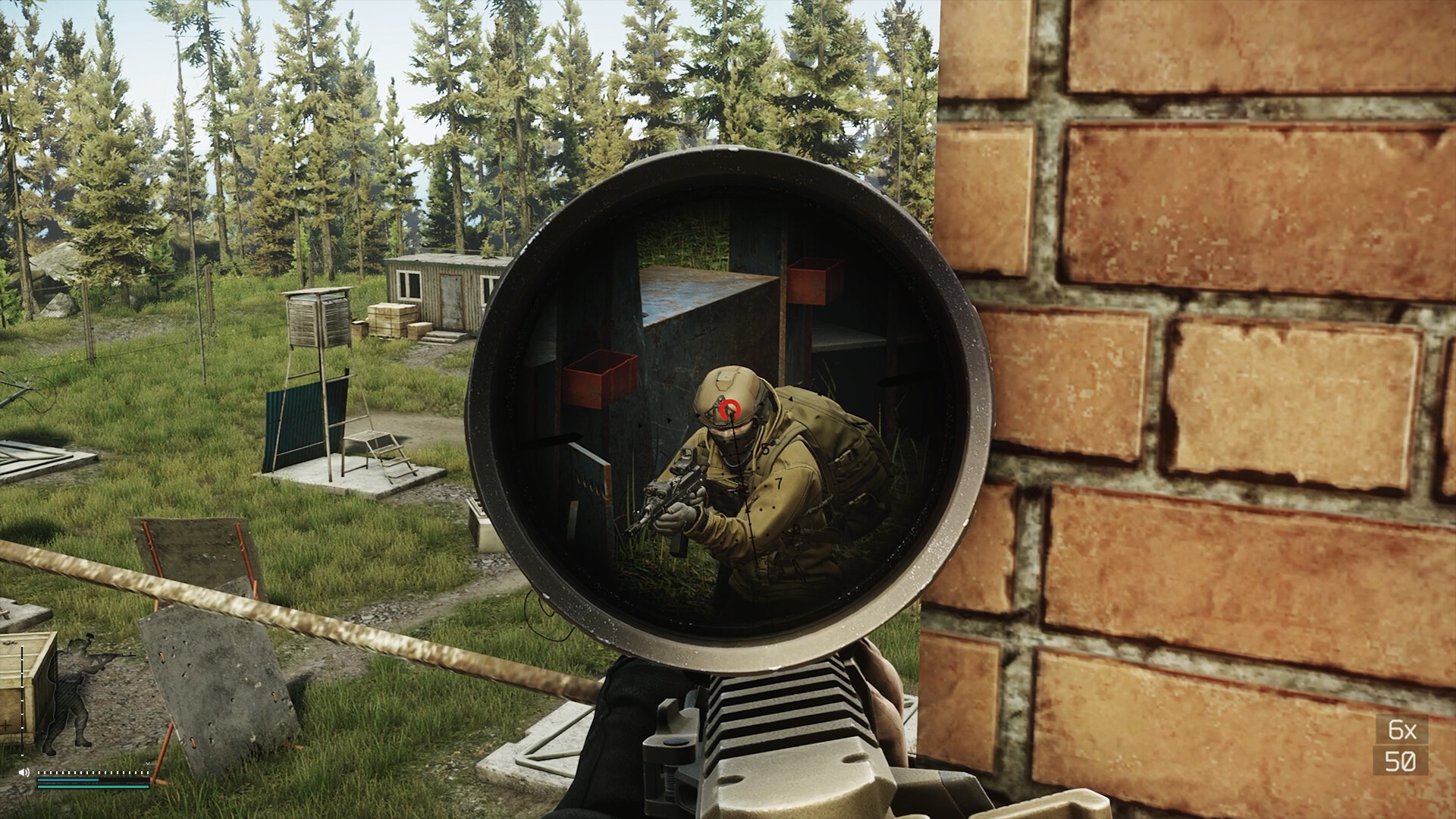I've played a few hours of Dawn of War 4, and it might just be the true sequel to the original game that we've been waiting for
King Art Games wants to bring back what made the first game special.
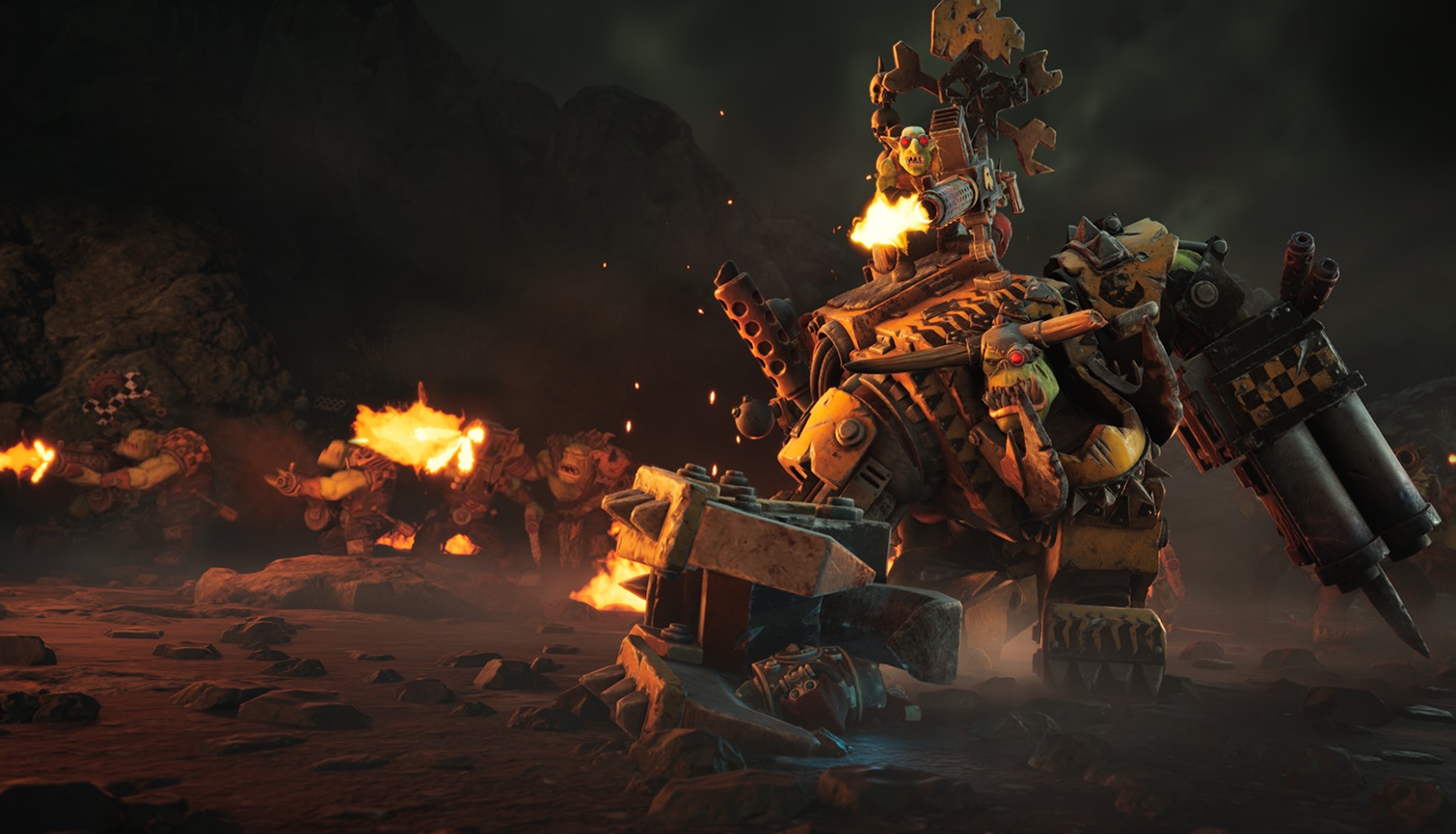
A horde of howling orks comes charging across the wartorn wasteland, straight towards the men and women of the Astra Militarum, waiting with guns primed, hiding behind walls, readying themselves for death.
Then angels fall from the heavens; heavily armoured saviours in drop pods that slam to the ground and annihilate any orks unlucky enough to be standing underneath them. The Blood Ravens are here. And they are going to fuck shit up.
Oh, boy. Dawn of War 4. Yes, it's back. And I do really mean back. If, like me, you've been praying to the God Emperor that one day we'd get a true sequel to the original Dawn of War, the GOAT, then I've got good news: the horrible, desiccated, throne-bound corpse was listening.
OK, OK, I don't want to get too ahead of myself. I have played one skirmish map (multiple times) of a pre-alpha build that's full of placeholder assets and wonky performance. But even this early, there are reasons to be very excited. Here are a few of them:
- The Blood Ravens are back, joined by orks, necrons and the boffins of the Adeptus Mechanicus.
- Each army will have its own dynamic story-driven campaign.
- A wargear system will let you tailor units for different engagements.
- Expect different types of missions, but with returning features like proper base building, capture points and a basic cover system.
- Multiplayer modes—including Last Stand—will be available, but the singleplayer campaigns are the focus.
- Sync kills have been expanded, so troops fighting each other in melee will sync up to create more elaborate hand-to-hand duels.
- And yes, you'll be able to paint your armies again.
So! Yeah, I am cautiously pumped for this.
And King Art feels like a really good fit. Iron Harvest is one of the best modern RTS romps, and it generated a lot of comparisons with not just Relic's design philosophy, but specific games like Company of Heroes and Dawn of War. If I was going to pick a new studio to take on Dawn of War, King Art would be at the top of the list.
Return to Kronus
The skirmish I played was designed specifically to show the game off; it's not one that you'll see at launch. Still, it reflects the kinds of skirmish mission types that you'll see in the campaign: a mix of sandbox conquest, scripted surprises and over-the-top story beats.
Keep up to date with the most important stories and the best deals, as picked by the PC Gamer team.
Once the Blood Ravens drop into the battlefield, I'm encouraged to start building my base immediately, before expanding across the map by capturing locations that generate resources, which I'll then spend on research, new units and reinforcing squads that have taken a beating. These resource points can be upgraded, and protected by surrounding them with bunkers and turrets that are surprisingly efficient at depriving foes of their limbs and guts.
The cover system is a simple one.
Just to be on the safe side, I stick some Blood Raven Intercessors behind some barricades too. The cover system is a simple one where you just click on the barricade and your troops line up behind it. You won't see any green and yellow dots denoting who is in full cover and who is still a bit vulnerable—units are either protected or they aren't. I miss the complexity of the series' original cover system, but the lack of faff is appreciated.
While I'm doing this, the orks are busy. Along with trying to capture these same points and constantly harassing me (they can build up quickly and spit out units at a faster clip, but the Blood Ravens are considerably beefier), they're slowly constructing some more intimidating units—Gorkanauts—at two outposts, as well as keeping my Astra Militarum buddies locked down.
This gives me some optional objectives: destroy the outposts, and take the heat off the Astra Militarum. Ticking the latter off the list means my brave (but considerably more mortal) allies can start sending units into the fray—including a gargantuan Knight—giving me an advantage when I tackle the orks' main base.
While I'm working towards these goals, the necrons attack. Teleporting into a battle that's already underway, they start slaughtering orks and chipping away at my Blood Raven squads. It's a three-way clusterfuck filling the screen with bullets, lasers, explosions, and bisected corpses. It's brilliant.
Confidence bolstered by defeating the necrons, I push further into ork territory, with an army that now contains Intercessors with jump packs, Bladeguard Veterans, multiple Terminator squads, Redemptor Dreadnoughts, Reaper Executioners—I'm in Heaven. The enemy AI is single-minded and relentless, and while it briefly manages to catch me out with a sneaky flanking assault, it's not enough to hold back my Blood Raven army. I push them back to the top corner of the map and keep them there while I build as many Dreadnoughts as I can. Just for fun.
The battle ends in fire. Orbital strikes—one of my deadly stratagems—decimate the ork buildings, while my Dreadnoughts tear into the enemy force, smashing any ork that gets close while spitting flames at the rest. It's over in seconds.
Killer quartet
Only one faction was missing from this glorious battle. The Adeptus Mechanicus were presumably busy elsewhere on Kronus doing weird experiments, but King Art did tease some of their features, including their extremely convenient ability to see enemy movement underneath the fog of war. They also use a base network that enhances production efficiency as you link buildings together. Any units and defenses that are inside the network also receive buffs, which could make for some effective turtling strategies. Otherwise, they're still a bit of a mystery.
Now let's dig into the rest of the factions.
Blood Raven space marines are, you'll be pleased to know, tough as hell.
Blood Raven space marines are, you'll be pleased to know, tough as hell. The speed with which Dawn of War 3's units could be downed was a bit of a sore point, but that is thankfully not an issue here. They might not be at the power level of a space marine from a Black Library novel, or Titus and pals in Space Marine 2, but they can handle a lot. They feel indomitable.
The infrastructure of the Imperium also means they are excellent base-builders, and any unit can call down a new building—they ain't cheap, but they, like the space marines themselves, can take a beating. And you can plonk them down anywhere, quickly creating outposts wherever they are needed.
Blood Raven units can also be kept in reserve, so you can deploy them where they're most needed—just like the tabletop game. You can fling them into action via drop pods, and you can even move existing units around the battlefield in Thunderhawk flying transports. Basically, there's no reason why you shouldn't be in the thick of things nearly all the time. Space marines don't need breaks.
Expect them to be more balanced in multiplayer, but in the campaign they are designed to fulfill a power fantasy. And they manage it. When a small army of orks took a critical point from me while my main army was busy on the other side of the map, I decided to test out my new Terminator squad—elite warriors decked out in the best armour, sporting weapons far too large for a normal space marine. Using the wargear system I equipped them with intimidating assault cannons and marched them into battle. Seconds later they were surrounded by green and red viscera.
To be clear, though, Blood Ravens—even their Terminators—ain't immortal. The relentless green tide can whittle them down, and the orks have some mean machines that can crack open space marines like tins of beans.
Orks use overwhelming numbers and lax building codes to get an edge, covering the map in ramshackle buildings and boisterous warriors itching for a fight. They are comparatively squishier than the Imperium's elite, but they make up for their fleshiness with an unquenchable enthusiasm for violence and conquest. And they can quickly establish a foothold, plonking down fortifications and bringing in new units with alarming alacrity.
With their beefy mechs, like the imposing Gorkanaut, and vehicles like the Battlewagon, the orks have no dearth of tanky machines. These things can be squad-killers. But orks don't need heavy metal to be a nuisance. They can also get hyped up into a psychic rage (a WAAAGH!) by destroying buildings and units, which in turn unlocks new stratagems to make them even more effective killing machines.
Finally we've got the necrons. I only got to see a glimpse of them in the demo, but oh boy, what an introduction, just dropping in and wrecking everything. Necron armies are slow on foot, but can use teleportation technology to give you an unpleasant jump scare. Units also regenerate health, and there's a building that can resurrect units for free. Classic undying machine nonsense.
Once the necron HQ is fully upgraded, it can spawn Monoliths—huge, black citadels that slowly float through the battlefield, spitting out lasers and causing trouble. They can be linked to necron bases for instant teleportation. Extremely handy, then, for a faction whose broad strategy is to completely engulf the map, making every inch of it necron territory.
Bloodthirsty
Dawn of War 4 is certainly ticking all the right grimdark boxes. One skirmish isn't a very robust dataset, but it was an extremely fun skirmish. The fights look ridiculous and sound appropriately bombastic, the space marine attacks are blessed with incredible weight, really emphasising how terrifyingly strong they are even when you're zoomed out, and the range of tactical options is impressive—the stratagems, units and upgrades give you plenty of ways to get out of or into a sticky situation.
The pace feels right, too, though it's a lot faster than the previous games (and obviously the tabletop version). You can get a full base up and running in minutes, and units are recruited pretty swiftly. Fights, meanwhile, tend to go on for just long enough so that you can zoom in and admire the spectacle, while dishing out orders and activating special abilities, but the victor of each individual confrontation is usually crowned in a timeframe measured in seconds.
The victor of each individual confrontation is usually crowned in a timeframe measured in seconds.
For a game this brisk, the balance between micro and macro was on the money, though the swiftness of battles has necessitated the removal of some features from the previous games, like using craters for cover or using suppressive fire to lock enemies down. Dawn of War 4 wants you to jump into the fray as quickly as possible.
The history of the series has made me a bit cautious, but Dawn of War 4's demo has got my blood pumping. If it sticks the landing, I can absolutely see this living up to the legacy of the first game. And hopefully we'll get more opportunities to duke it out over Kronus before launch next year—King Art says it's keen to run some playtests.
In the meantime, keep an eye on PC Gamer for my chat with King Art, which you'll be able to read tomorrow. And there's a lot more Gamescom coverage to come.

Fraser is the UK online editor and has actually met The Internet in person. With over a decade of experience, he's been around the block a few times, serving as a freelancer, news editor and prolific reviewer. Strategy games have been a 30-year-long obsession, from tiny RTSs to sprawling political sims, and he never turns down the chance to rave about Total War or Crusader Kings. He's also been known to set up shop in the latest MMO and likes to wind down with an endlessly deep, systemic RPG. These days, when he's not editing, he can usually be found writing features that are 1,000 words too long or talking about his dog.
You must confirm your public display name before commenting
Please logout and then login again, you will then be prompted to enter your display name.
